Review of LinkedIn's Future of Job Search
LinkedIn recently announced its "Future of Job Search" with much fanfare about its AI capabilities, but I'm left with a distinct feeling of déjà vu. While the tech giant positions this as groundbreaking, my first impression is that it's nothing revolutionary - it has already been here for years.
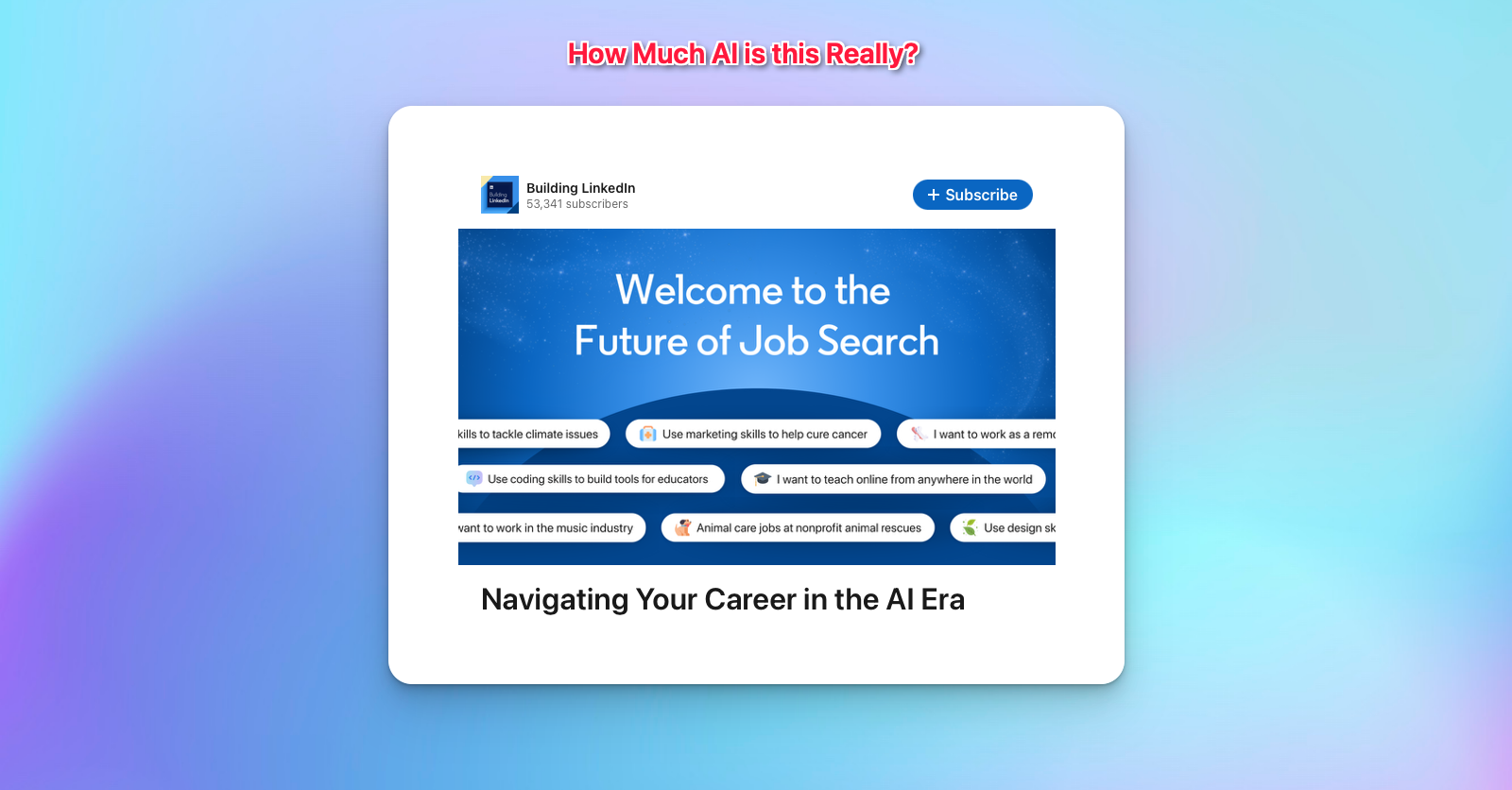
Xing beat them to market months ago with a nearly identical AI-powered search implementation. What we see isn't innovation but iteration, and frankly, I expect more from a company with LinkedIn's resources and Microsoft's technological architecture.
Background of AI-powered Search
The idea is quite simple—instead of using filters in the UX, parse the user's query and show jobs based on it, applying the filters in the background. How does that work?
The system interprets natural language queries directly rather than forcing users to navigate complex filter interfaces and dropdown menus. When a job seeker types something like "I want to use my brand marketing skills to help cure cancer," the LLM parses this statement to identify both hard skills (brand marketing) and aspirational goals (helping cure cancer). It implicitly derives industry focus (healthcare/biotech).
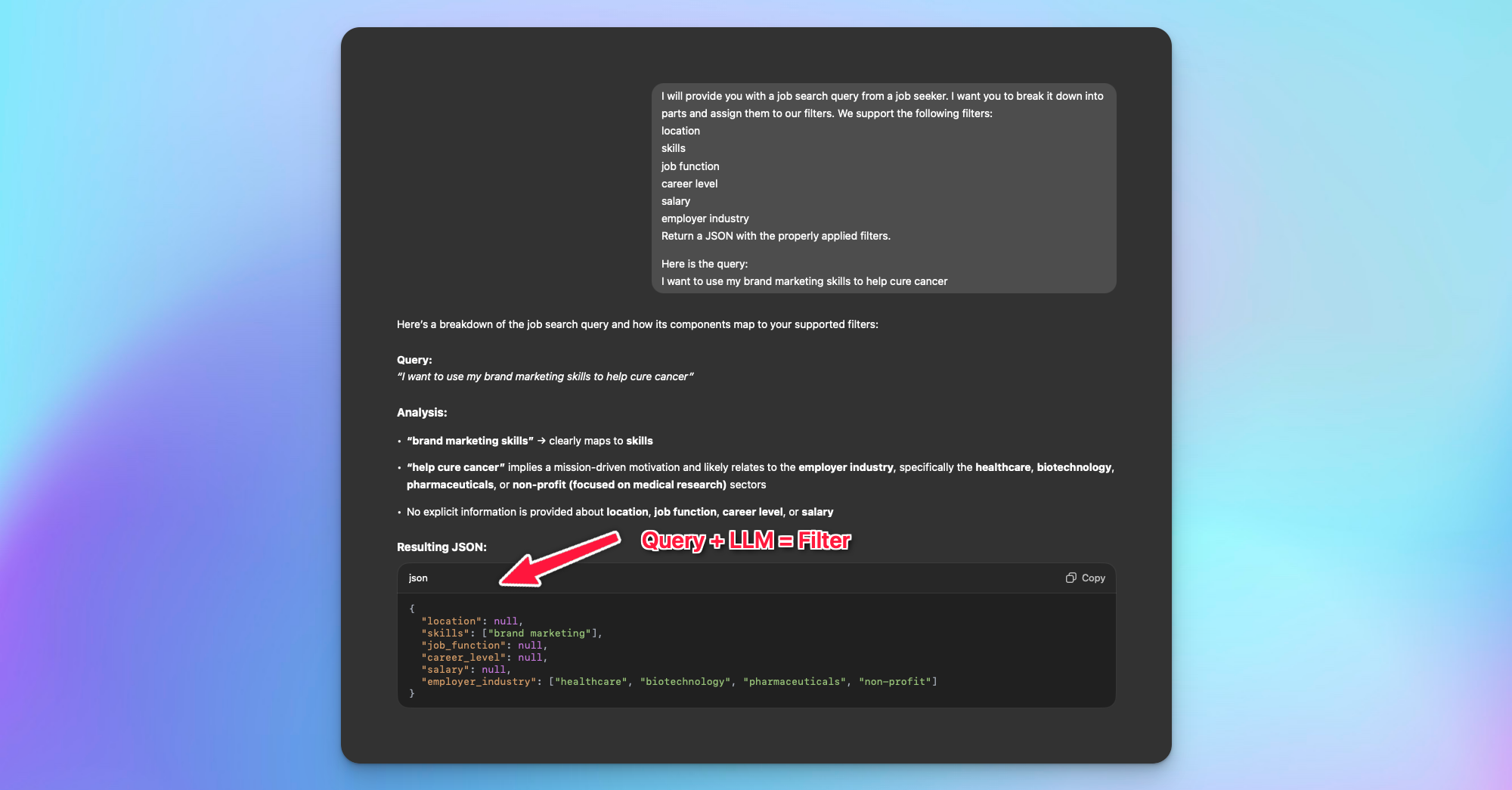
The system then applies these extracted parameters as background filters to deliver tailored job recommendations—in this case, marketing positions within healthcare companies developing cancer treatments. This approach eliminates the friction of traditional job search interfaces while capturing nuanced intent that standard keyword matching might miss.
In the example below, I have tried a different query:
"I want to build trading software with my 10y+ C++ skills"
As you can see, ChatGPT flawlessly suggests filters to apply based on the query:
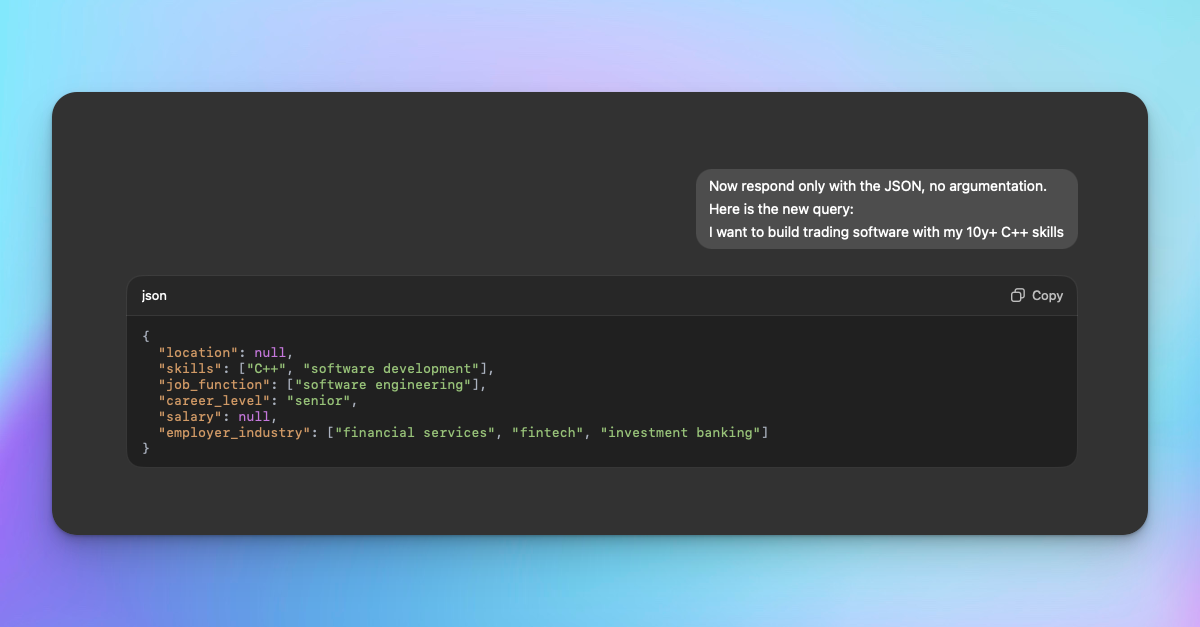
Building something like this in the past was crazy hard—you had to build a machine learning model that recognized each entity from the query and classified it into the possible filters.
The more filters you have, the complex this becomes because you need training data for each step and each filter.
However, with LLMs and generative AI, the complexity becomes a simple API call to good old ChatGPT.
My Experience with AI-Powered Search
I have proposed this solution for the first time in 2023 in my book ChatGPT: Undressed & Unadorned (You can get the book for free here):
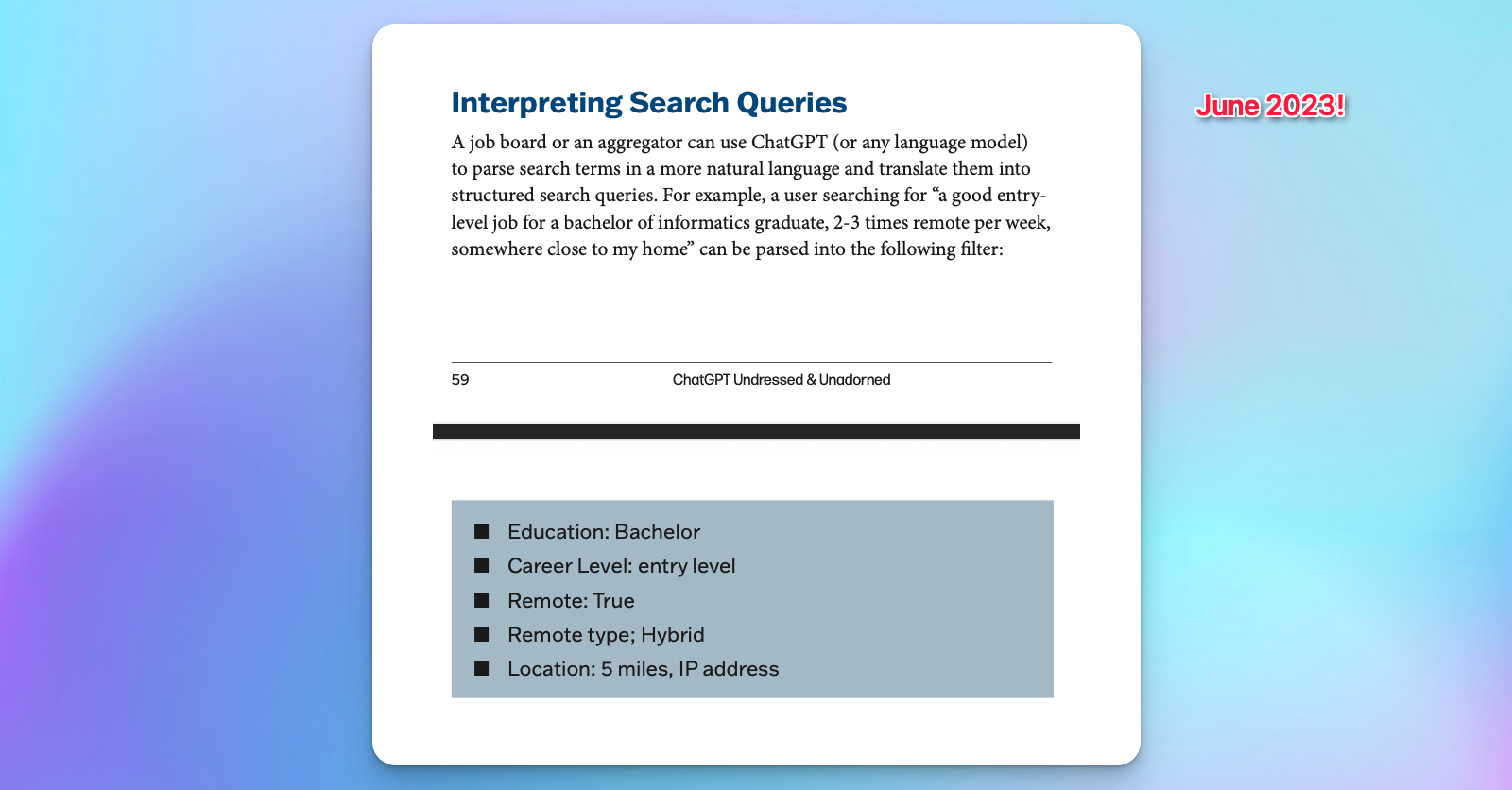
I have presented it at multiple conferences and workshops over the past 2 years.
Xing did a similar implementation in October 2024, which I extensively covered in this blog post. You can test it here.
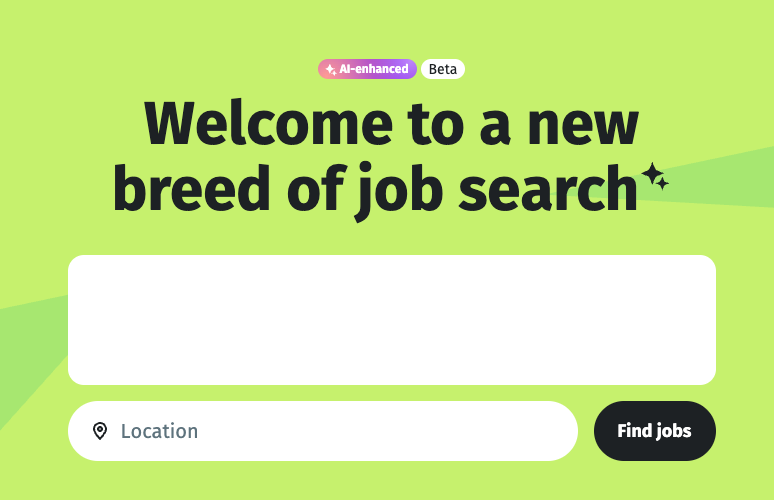
I have implemented the same query parsing technique for some niche job boards as part of the matching algorithm, but not in the front end.
They are helpful, but quite basic.
So, there is nothing revolutionary or futuristic about this concept. But what about the value proposition?
Value Proposition
It essentially brings conversational AI to the job search, allowing candidates to express their career ambitions in human terms rather than forcing them to translate their desires into the rigid language of filters and taxonomies. While conceptually simple, effective implementation requires robust natural language processing to interpret varied phrasings accurately and maintain contextual understanding of career-specific terminology.
Would job seekers use this? Let’s look at the Pros and Cons:
Pros of natural search for jobs:
- More intuitive expression of complex career goals that combine skills, values, and industry preferences
- Reduces cognitive load by eliminating the need to understand how to navigate filter systems
- Accommodates career changers who may not know the exact job titles they should target
- Potentially surfaces unexpected opportunities that wouldn't appear in narrowly filtered searches
- Eliminates the need to learn platform-specific search syntax or Boolean operators
Cons of natural search for jobs:
- Potential for misinterpretation of ambiguous queries leading to irrelevant results
- Lack of transparency about which filters are being applied behind the scenes (here, Xing shows you the filters they apply based on your search).
- May generate noise in results when the system incorrectly infers intentions
- It could feel imprecise to job seekers who know precisely what they want
- Cultural and linguistic nuances might not translate well across different regions
- Job seekers are conditioned to traditional search interfaces and might resist adopting new search behaviors
Value Proposition as Part of Your Matching
These AI features hold promise in understanding search intent and behavior, particularly why job seekers abandon searches or don't engage with results.
Here is where I see the value for such query-passing techniques: understanding why job seekers don’t interact with search results, you serve them, or give them empty searches.
You can use the same approach to review and break down searches into their components and analyze them against your job inventory.
The same can be applied to analyzing user job alerts that bring low CTRs or no clicks on emails.
Additional Features
The rest of the announcement mentions additional features like hiring assistants for recruiters, nicely called an “AI Agent that streamlines tactical tasks":

and an AI-coach for premium subscribers:
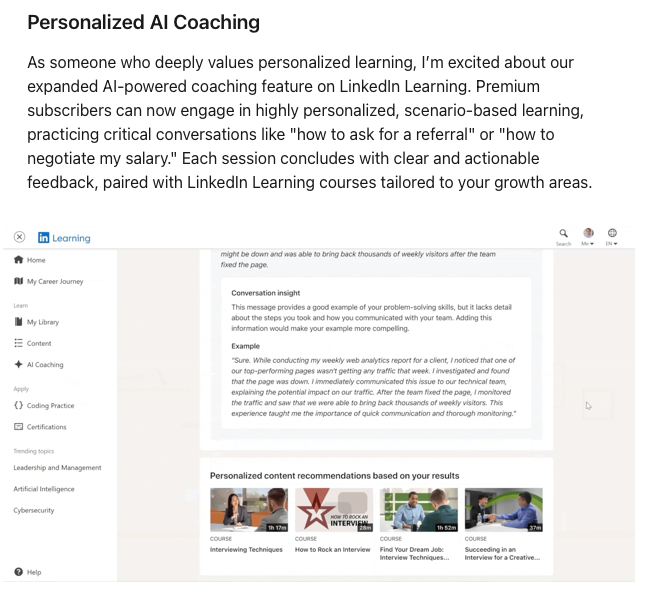
There are 100 companies with the same promise right now.
Of course, in the case of LinkedIn, a hiring assistant is indeed a cool value proposition, because an agent running on their data will be significantly better than any of the AI-recruiting tools using proprietary, outdated job seeker databases and Boolean search. So, in a way I applaud them for releasing this - hopefully I will stop seeing the "next AI recruiter" announcements in my feed.
Summary
LinkedIn's "Future of Job Search" announcement represents an incremental step rather than the revolutionary leap their marketing suggests. The query-parsing technique they're implementing has been circulating in the industry for years—I've been discussing it since 2023 in my book and implementing it for niche job boards myself.
Their AI recruiting assistant will most likely outperform competitors thanks to LinkedIn's vast data advantage, this hardly qualifies as a groundbreaking innovation.
The announcement feels underwhelming for a company with LinkedIn's resources and Microsoft's technological backing—more like catching up than leading the way.
What's your take on LinkedIn's AI job search features? Are they truly innovative, or just playing catch-up? Join the conversation on LinkedIn:
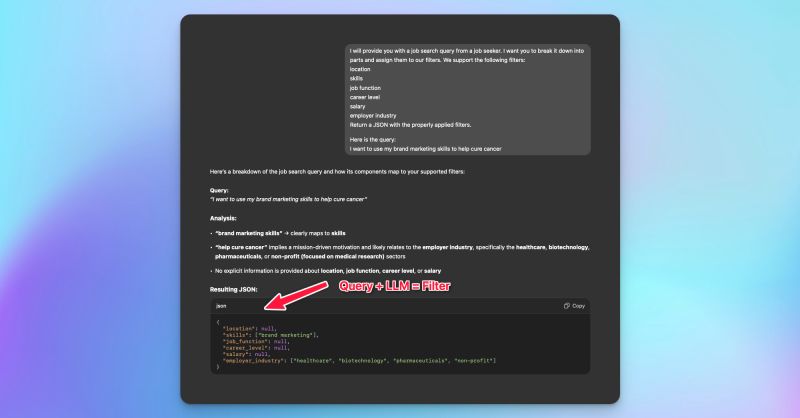
If you enjoyed reading this, subscribe for free to my blog and get the latest posts in your email or connect with me on Linkedin.
